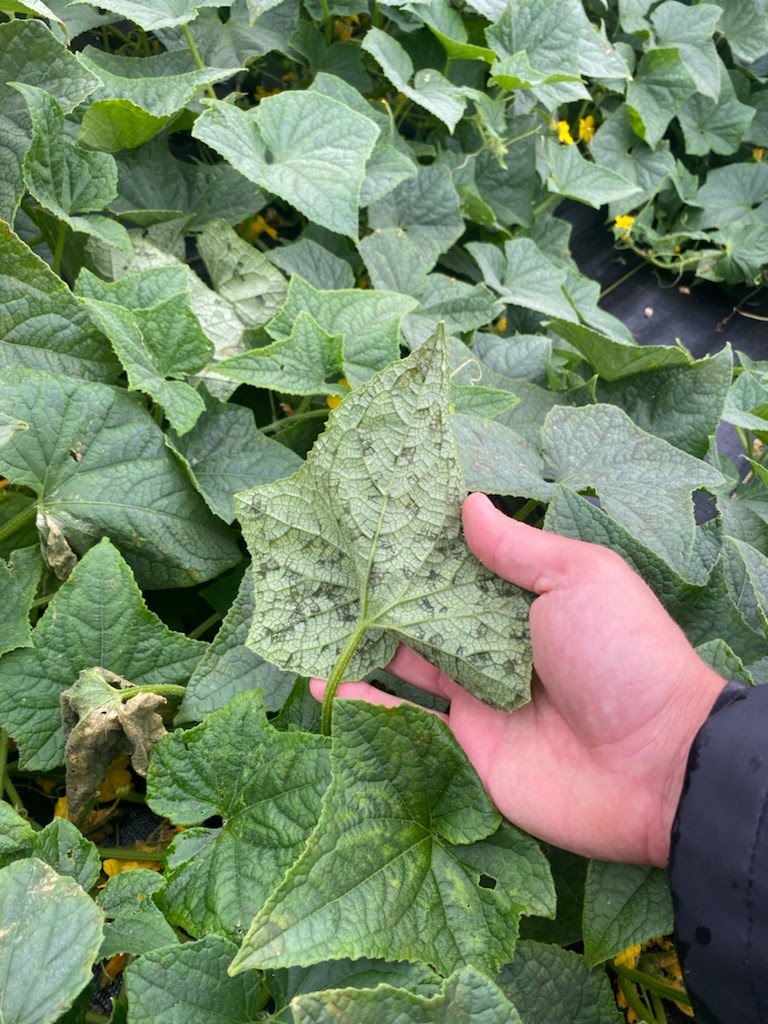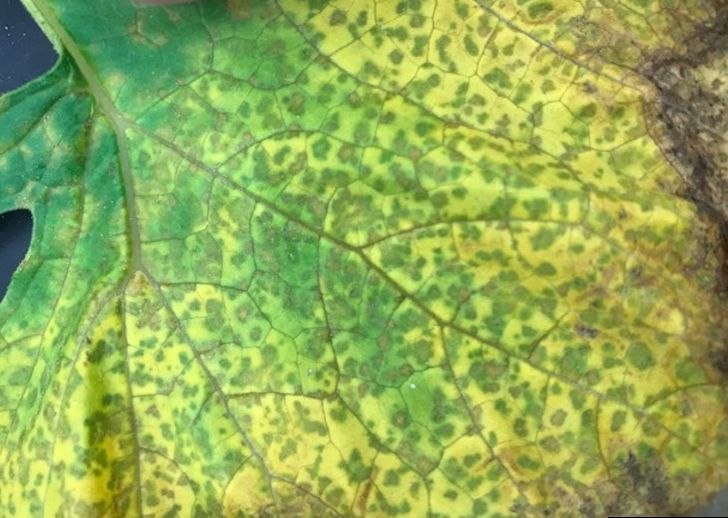
Pest: Cucurbit downy mildew (Pseudoperonospora cubensis)
Pest/disease identification and lifecycle, most common damage symptoms and crops affected:
Cucurbit downy mildew can be very destructive of cucumbers, squash, pumpkins and melons, if conditions are favorable to it. This disease does not overwinter here, and its severity in any given season is often dependent upon when it arrives, if at all.

The first noticed symptoms of cucurbit downy mildew are often angular yellow leaf spots, which are angular because they are constrained by leaf veins. Corresponding dark lesions, and sometimes spores, are seen on the bottom of the leaf as the disease develops. This website from Cornell has links to lots of photos to compare with and more information.
Gardeners willing to help track the annual spread of cucurbit downy mildew can find more information here, as well as links to more informational resources.

Management options:
Cultural:
The best “control” is to choose resistant varieties, when available. Some strains of the disease have overcome resistance in older cucumber varieties, but new varieties have been developed, and NY 264 and Bristol have been promising in trials in Long Island and at the University of Massachusetts.

Pesticides approved for use in certified organic production (as a last resort):
Materials for controlling fungi, and fungi-like diseases like downy mildew, are most effective when applied preemptively, so watching for the spread of the disease is important. Scouting should start in earnest when the disease has been reported nearby. The cucurbit downy mildew forecasting website is a great resource to find both an updated map of this year’s reported instances (by crop species) and a forecast of potential spread for the upcoming few days.
For farm-scale control options, you can consider a copper product and/or a bio-fungicide like Actinovate, DoubleNickel, etc. Zonix should also have some effect against zoospores produced by the disease; however, cucurbit downy mildew can produce another spore type and there’s no easy way to know which type of spore might be blown to your field. Under severe disease pressure, bio-fungicides alone are unlikely to prevent infection. More information about organic fungicides options for cucurbit downy mildew can be found here.
Please note: This information is for educational purposes. Any reference to commercial products, trade or brand names is for information only, and no endorsement or approval is intended. Pesticide registration status, approval for use in organic production and other aspects of labeling may change after the date of this writing. It is always best practice to check on a pesticide’s registration status with your state’s board of pesticide control, and for certified organic commercial producers to update their certification specialist if they are planning to use a material that is not already listed on their organic system plan. The use of any pesticide material, even those approved for use in organic production, carries risk — be sure to read and follow all label instructions. The label is the law. Pesticides labeled for home garden use are often not allowed for use in commercial production unless stated as such on the label.
